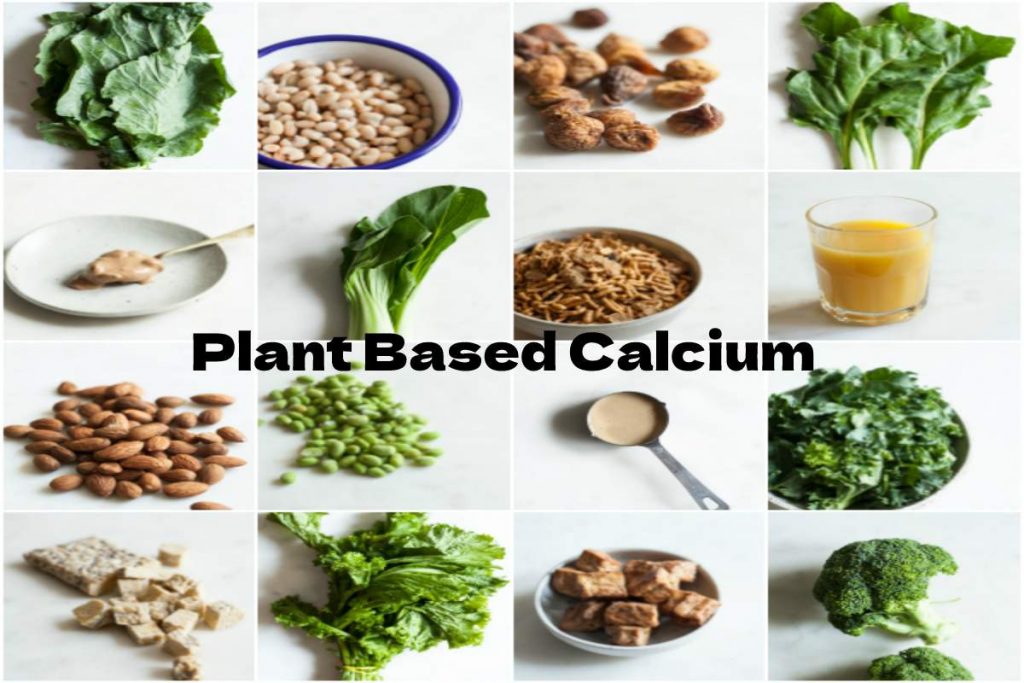Table of Contents
Introduction
Calcium in Plant Based Food you care to know about calcium sources and their importance in the body to you is:
Calcium is the most common mineral in the body, as 99% of the calcium in the body is found in bones and teeth to support its construction, and the rest is present in muscles, blood, and other bodily fluids.
Examples of Different Calcium Sources
Contrary to popular belief, milk is not the only or exclusive source of calcium. The most important examples of calcium sources are:
Tahini
whole sesame tahini is up to seven times more calcium-rich than regular tahini
As the amount of calcium available in two tablespoons of real raw tahini is roughly equal to the amount of calcium in a cup of milk.
Flaxseed
In addition to being an excellent source of omega-3, it is a crucial calcium source
With every four tablespoons of ground flaxseed containing approximately 74 milligrams of calcium.
Green vegetables
Calcium in Plant Based Food are Green vegetables, such as broccoli,cabbage, beans, and peas contain a large amount of calcium compared to the number of calories, but consume them in relatively large amount to get enough calcium.
Sweet potatoes
Calcium is also a source of sweet potatoes, with a large grain containing approximately 68 milligrams of calcium, as well as potassium, vitamin a and vitamin c.
Sunflower seeds
Each cup of sunflower seeds contains approximately 109 milligrams of calcium and is rich in magnesium.
It balances the effects of calcium in the body and promotes muscle and nerve health.
Almonds
Almonds are a very important source of calcium, with each cup of almonds containing approximately 385 milligrams of calcium.
Which recommends is about a third of the amount per day, but should be taken with caution and attention to its high calorie content and healthy fats.
Legumes and cereals
In some legumes there is a good amount of calcium, especially in soy and white beans.
Unless they are improving varieties rich in calcium but give our bodies a lot of calcium because we consume them in large quantities.
Consumption of plant calcium
One of the common arguments against the use of plant calcium sources is that it is not fully absorbs by the body.
In fact there are some compounds that prevent the absorption of calcium from plant foods, for example:
Phytic acid found in cereals and vegetables.
Oxalic acid found in some fruits and vegetables.
However, the effect of these compounds has been found to be low, and the following results have been reaching on calcium absorption from its sources:
The absorption of calcium from soy milk and tofu is similar to that of cow’s milk.
calcium absorption from broccoli, cabbage, and cabbage is approximately twice as high as calcium absorption from cow’s milk.
The Importance of Calcium to the Body
Calcium is essential for maintaining muscle activity including the cardiovascular muscle, as well as the secretion of various hormones and enzymes.
It involves in the process of decomposition and building of the bone, a process that continues in our bodies.
In adults, especially postmenopausal women, the pace of construction becomes less degradable, thus reducing bone mass and increasing the risk of osteoporosis.
Bones form the body’s calcium store in times of deficiency, when the body does not have enough calcium
Consequently, calcium deficiency in food over many years may cause thinning and osteoporosis.
Recommended Servings of Calcium
Men up to the age of 70: 1000 milligrams per day.
Women up to the age of 50: 1000 milligrams per day.
Men over 70 years of age: 1200 milligrams per day.
Women over 50 years of age: 1200 milligrams per day.


